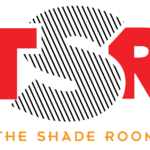
In a yard in Nairobi, cars are piled up to await bids at auctions that haven’t had enough buyers lately, a growing problem in Kenya as its share of debt hit a new 18-year high in August.
A soft economy and expensive loans have increased the number of distressed borrowers whose assets from homes to cars and furniture are being seized by aggressive banks.
Data from the Central Bank of Kenya (CBK) shows that non-performing loans (NPL) hit a record Sh674.9 billion in August from Sh657.6 billion in July and Sh621.3 billion at the start of the year.
The rising sentiment reflects economic challenges for businesses and households resulting in a decline in sales and slow activity – leading to job cuts, reduced wages, losses and business closures that ultimately make it difficult for households to pay their debts on time.
This led to an increase in property auctions and additional negative listings of thousands of people with the credit reference bureau (CRB), damaging the debtors’ chances of being able to borrow more.
The share of non-performing loans (NPL) in the banking industry rose to 16.7 percent in August, the central bank said, remaining in double digits for the month and at the level last seen in April 2006.
Joseph Gikonyo, the chief executive of Garam Auctioneers, reported that many vehicles, land, houses and office equipment were sold at low prices.
“The market is full of houses, commercial buildings, seized motor vehicles, and office furniture. Distressed borrowers cut boards. Every day, we pick up cars and park them left right and centre,” said Mr Gikonyo.
“While there is an increase in the number of properties being auctioned, there is a corresponding shortage of these assets. In fact, the absorption is at an all-time low.
He opined that storage yards for confiscated properties have sprung up in Nairobi and across the country as monthly auctions.
“I would say that the business is thriving despite becoming saturated because Kenyans will usually copy successful businesses,” said Mr Gikonyo, while advising new entrants into the auction business.
Industries and other businesses have frozen their activities in response to the sluggish economy, prompting job cuts as profitable companies report reduced earnings.
This has seen workers who have tapped mortgages and unsecured loans to buy things such as furniture and cars and expenses like standard school fees in a business environment where monthly take home has been reduced due to increased levies.
Workers’ wages fell after the introduction of a housing levy equal to 1.5 percent of their monthly salary. The insurance levy will also rise this month after 2.75 percent of the monthly salary for universal health coverage.
Unsecured loans are provided on the strength of salary.
Companies that have borrowed based on cash flow forecasts have also struggled to repay bank loans.
On Wednesday, the central bank lowered its 2024 growth forecast to 5.1 percent from 5.4 percent after slower growth in the second quarter.
Kenya’s private sector saw subdued business conditions in September as output and new orders contracted again, reversing a brief recovery seen in August, Stanbic Bank reported on Thursday.
Stanbic Bank Kenya’s Purchasing Managers’ Index (PMI) fell to 49.7 in September from 50.6 in August, falling below the 50.0 threshold that separates growth from contraction and marking the third decline in four months.
“Business conditions contracted slightly in September, indicating that the pickup in August was due to some recovery after the disruption caused by the protests earlier this year,” said Christopher Legilisho, Economist at Stanbic Bank.
Late payments, especially for public sector supplies, are suffocating small businesses and making it difficult for entrepreneurs to repay loans.
Bank credit has also dried up as lenders worry about an increase in bad loans as credit becomes more expensive and economic activity slows.
Credit demand slowed to 1.3 percent growth in August compared with a 3.7 percent increase in July – the lowest since 2017 when Kenya introduced lending rate controls that reduced supply for loans.
CBK considers credit growth of 12 to 15 percent sufficient to support healthy economic growth.
The high cost of borrowing has caused borrowers not to follow through on loans in an economic climate where demand for products is slow, forcing companies to freeze hiring and expansion plans.
This led to the refinancing of foreclosed products as buyers at auction relied on loans to build homes, partly contributing to the glut.
On Tuesday, the CBK cut its benchmark interest rate by the largest margin since the start of the Covid-19 economic crisis in March 2020, signaling relief for borrowers suffering from high-cost debt and reversing a long-standing demand for credit.
The CBK Monetary Policy Committee yesterday cut the key lending rate by 0.75 percent or 75 basis points from 12.75 percent to 12 percent after inflation fell to its lowest level in more than a decade.
It is expected to lead to lower borrowing costs for households and companies that have struggled to service expensive credit since the CBK began raising rates in June 2022 amid global economic shocks that have seen inflation rise for years.
“The whole idea of the reduction in CBR rates is to encourage banks to lower their lending rates so that we can also reduce NPLs and encourage lending by the private sector from banks,” said CBK Governor Dr. Kamau Thugge. Wednesday.
“We have seen a deceleration in private sector credit, and this is likely to have a negative impact on economic performance and that is why we decided to reduce the CBR.”
Banks wrote off bad loans and restructured some loans after the surge in NPLs.
Absa Bank Kenya Plc announced a Sh1.38 billion restructuring in the six months to June to cover individuals and businesses that included increasing loan tenors to reduce monthly payments.




